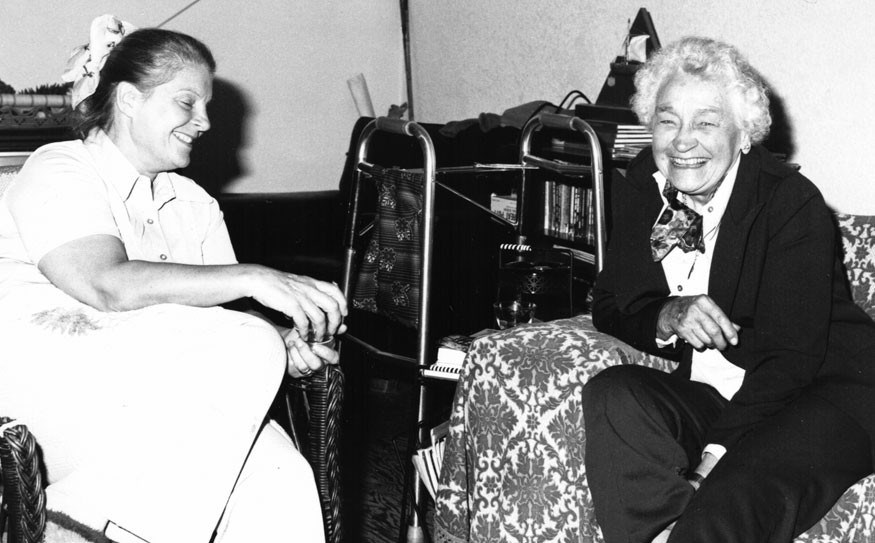"In the end, I suppose history is all about imagination rather than facts. If you cannot imagine yourself wanting to riot against Catholic emancipation, say, or becoming an early Tory and signing up to fight with the Old Pretender, or cheering on Prynne as the theatres are closed and Puritanism holds sway... knowing is not enough. If you cannot feel what our ancestors felt when they cried: 'Wilkes and Liberty!' or, indeed, cried: 'Death to Wilkes!', if you cannot feel with them, then all you can do is judge them and condemn them, or praise them and over-adulate them."
– Stephen Fry
Thirty-seven years ago today, on Sept. 6, 1975, the Resort Municipality of Whistler came into existence. Up until that day Whistler had been a fledgling ski area within the Squamish-Lillooet Regional District. The Lower Mainland owners of the collection of cabins in the valley paid their taxes to the SLRD.
Municipal Affairs Minister Jim Lorimer, for whom Lorimer Road was named, was in Whistler that day to announce that Al Raine would be the provincial government's representative on the first Whistler council. The elected members of council were Mayor Pat Carleton and Aldermen Garry Watson, John Hetherington and Bob Bishop.
"Whistler is an experiment," Lorimer said, "and if it is successful we expect to incorporate other communities that have a similar problem, places such as Tofino that have a small residential community but thousands of visitors in the summer."
We mention this bit of history because Whistler lost three important voices in its history last week with the deaths of Florence Petersen, Dave Cathers and Art Den Duyf.
There isn't space here to give full context to the contributions these three figures made to Whistler, but very briefly:
Florence Petersen is the reason there is a Whistler Museum and Archives and that some of Whistler's history is preserved. Florence and four fellow school teachers paid $1,500 for a cabin at Alta Lake in 1955 and made it their summer getaway. A decade later that cabin, Witsend, burned down and Florence and her husband Andy built their home on the lot next door. She moved to Whistler full-time when she retired from teaching in 1983. Her neighbour was Myrtle Philip, who moved to Alta Lake in 1914, built the Rainbow Lodge and was the area's first school teacher. Florence made a commitment to Myrtle to keep Whistler's early history alive. That promise was kept through the Whistler Museum and Archives Society and several history books Florence wrote.
Dave Cathers was best known as a co-founder of Whistler Search and Rescue. The organization was started in 1973 after a fatal avalanche on Whistler Mountain the previous winter exposed the community's inability to perform backcountry searches, never mind rescue operations. Love of the mountains was a common bond among the handful of people who came together to form Whistler Search and Rescue. Teamwork and high-level alpine skills are the traits that Dave Cathers insisted be part of Whistler SAR.
Art Den Duyf did not have the public profile of some others, but the businessman and founder of Sabre Transport was very involved in the early days of Whistler Village's construction. His philanthropic efforts included donation of land for community projects and he was very active in his church.
These three figures each played a role in the brief history of the largely purpose-built resort town of Whistler. Does this history matter?
Stephen Fry, the English actor, writer and director, said in 2006: "The biggest challenge facing the great teachers and communicators of history is not to teach history itself, nor even the lessons of history, but why history matters. How to ignite the first spark of the will o'the wisp, the Jack o'lantern, the ignis fatuus (foolish fire) beloved of poets, which lights up one source of history and then another, zigzagging across the marsh, connecting and linking and writing bright words across the dark face of the present."
These three Whistlerites, and their efforts, were sparks. They contributed to the layers of events, humanity and time that piled on top of one another form Whistler's history, its story, its sense of place.
"No place is a place," said American writer Wallace Stegner, until two things have happened: 1) "things that have happened in it are remembered in history, ballads, yarns, legends, or monuments;" and 2) "it has had that human attention that at its highest reach we call poetry."
Florence Petersen, Dave Cathers and Art Den Duyf each contributed to Whistler becoming a place.




